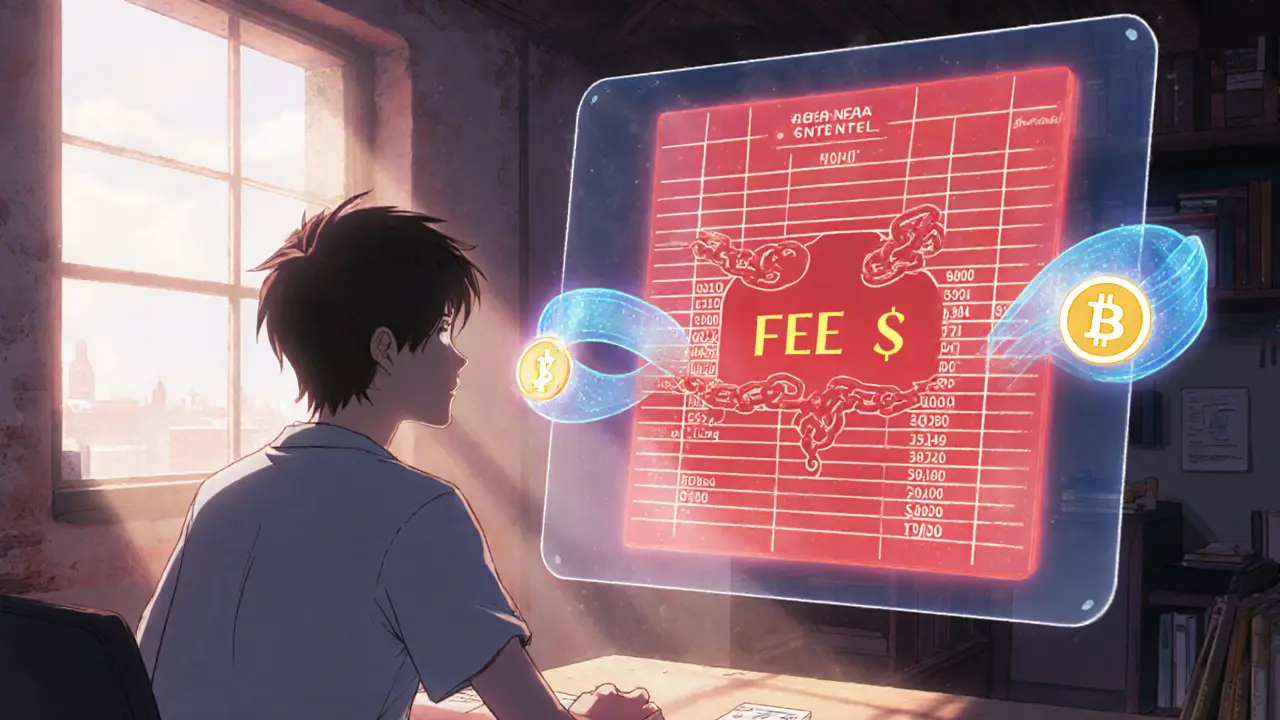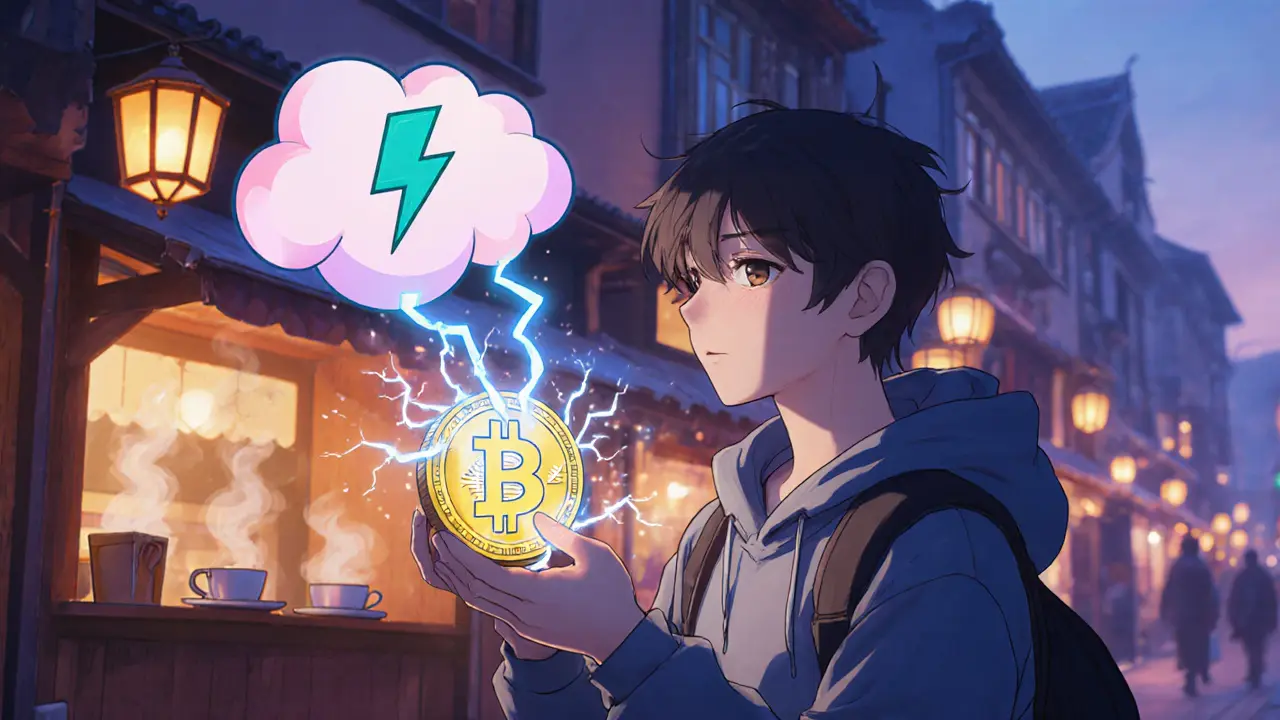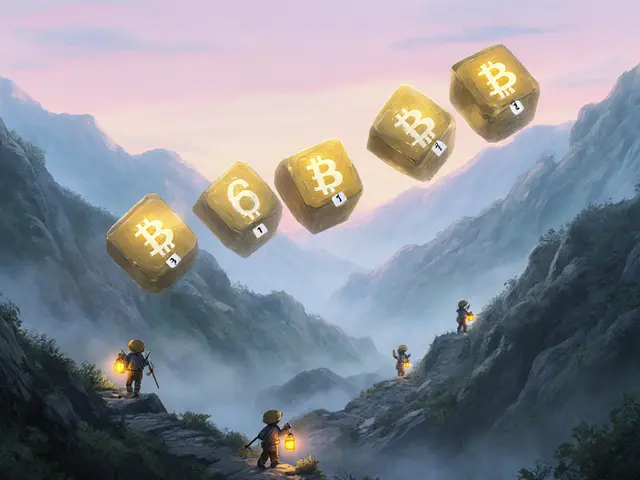State Channel Cost Calculator
Calculate Your Savings
Results
Based on Ethereum network data:
- On-chain: Each transaction costs 21,000 gas
- State channels: Only 2 on-chain transactions required (open + close)
- State channel setup fees: ~$0.50 (varies by network)
When transaction fees start eating up half your crypto balance, you know the underlying blockchain is hitting its limits. State channels offer a way to keep the ledger secure while letting users trade, game, or pay each other instantly and cheaply.
What Exactly Are State Channels?
State Channels are a Layer2 scaling mechanism that moves a series of transactions off‑chain, then settles only the final result on the main blockchain. The idea is simple: lock some assets in a smart contract, trade them privately, and only broadcast the net outcome. This cuts down on on‑chain traffic, slashes fees, and delivers near‑instant confirmations.
How State Channels Fit Into the Scaling Landscape
Blockchain networks are built in layers. The base layer (Layer1) handles consensus and security, while higher layers aim to improve speed and cost. Layer2 solutions sit atop the base chain and inherit its security guarantees while processing transactions more efficiently. State channels are one of the most mature Layer2 approaches, competing with Rollups which batch many transactions into a single on‑chain proof, Sidechains independent chains that periodically anchor to the main ledger, and Plasma a hierarchy of child chains designed for high‑throughput operations.
Core Building Blocks of a State Channel
- Multi‑signature contract an on‑chain escrow that requires signatures from all participants before funds can move. This contract holds the “state deposit” - any ERC‑20 token, ETH, or even NFTs.
- Off‑chain transaction a signed message that represents a state update but is not yet posted to the blockchain. Each update supersedes the previous one.
- Dispute resolution a built‑in timeout that lets a party challenge a premature channel closure by submitting a newer state. If fraud is proven, the cheating party’s deposit can be slashed.
Opening a Channel: Step‑by‑Step
- Both parties agree on the channel parameters (participants, assets, expiration).
- They deploy a multi‑signature contract on the base chain and each deposits the agreed‑upon assets.
- The contract emits a unique channel ID, which both parties store locally.
- From this point on, every transaction is an off‑chain transaction signed by both sides.

Closing a Channel: What Happens at the End
- Either participant can submit the latest signed state to the contract.
- The contract checks signatures; if valid, it distributes the locked assets according to that state.
- If a party tries to submit an older state, the other side has a dispute window (usually a few hours) to broadcast a newer state.
- After the window expires, the contract enforces the most recent valid state and releases funds.
Real‑World Implementations
The concept isn’t just theory. Bitcoin’s Lightning Network a massive state‑channel network enabling instant micropayments now hosts thousands of nodes and processes billions of dollars daily. Ethereum’s Raiden Network offers token‑transfer channels for ERC‑20 assets. Both projects prove that state channels can handle high‑frequency, low‑value flows that would be prohibitively expensive on‑chain.
Typical Use Cases
- Micropayments pay‑per‑use services such as streaming, per‑click ads, or IoT sensor data.
- Online gaming where players need rapid, frequent state updates without waiting for block confirmations.
- Decentralized exchanges that want to settle net trades off‑chain before final settlement.
- Enterprise supply‑chain contracts where two known parties exchange data repeatedly.

State Channels vs. Other Layer2 Solutions
| Feature | State Channels | Rollups (Optimistic / ZK) | Sidechains |
|---|---|---|---|
| On‑chain transactions required | 2 (open & close) | 1‑2 per batch (depends on proof) | Varies, often many per epoch |
| Ideal for known participants | Yes | Public, works for anyone | Public |
| Latency | Sub‑second (off‑chain) | Seconds to minutes (batch proof) | Seconds to minutes |
| Capital lock‑up | Required for the channel’s lifetime | Only for the batch proof | Depends on bridge design |
| Routing complexity | Multi‑hop routing needed for non‑direct peers | Simple, single‑hop | Simple, single‑hop |
Pros and Cons
- Pros
- Near‑instant settlements.
- Only two on‑chain writes regardless of activity.
- Fees are a fraction of standard gas costs.
- Strong security: the base chain can still enforce the final state.
- Cons
- Both parties must stay online to react to disputes.
- Funds are locked for the channel’s duration.
- Routing through multiple hops is still an open research area.
- Implementation complexity is higher than using a simple on‑chain contract.
Future Outlook
State‑channel research is buzzing with new ideas: better routing algorithms, hybrid models that combine channels with rollups, and user‑friendly wallets that hide the escrow mechanics. While rollups are stealing the spotlight for general‑purpose scaling, analysts agree that channels will remain the go‑to tool for ultra‑high‑frequency, low‑value interactions-think IoT sensor payments or real‑time multiplayer games.
Frequently Asked Questions
How many on‑chain transactions does a state channel require?
Only two: one to open (deposit) and one to close (settle). All intermediate moves stay off‑chain.
Can I close a channel unilaterally?
Yes, but the other participant has a dispute window to submit a newer signed state. If they do, the contract will enforce that newer state instead.
What assets can I lock in a state channel?
Any asset that a smart contract can hold: ETH, ERC‑20 tokens, NFTs, even domain names like ENS.
Is the Lightning Network the same as state channels?
Lightning is a specific implementation of state channels for Bitcoin. It shares the same core idea-off‑chain payments with on‑chain settlement-plus a network of routing nodes.
Do I need to run my own node to use state channels?
Not necessarily. Many wallets and services act as custodial channel managers, but for maximum security you can run a lightweight client that signs and verifies off‑chain messages.







shirley morales
June 30, 2025 AT 02:50 AMState channels epitomize the misguided pursuit of scalability at the expense of decentralization.
They lock capital in opaque escrow contracts that only the privileged can afford to monitor.
The assumption that participants will stay online is a naïve fantasy.
Such systems reward only those with constant connectivity and technical expertise.
They masquerade as low‑cost solutions while imposing hidden opportunity costs.
The security model hinges on a fragile dispute window that many will ignore.
Users are forced to trust that the contract code will not be subverted.
Any misstep results in irreversible loss of the locked assets.
The promise of instant settlement merely masks the underlying centralization.
Critics argue that this trade‑off betrays the ethos of open networks.
Yet venture capital continues to pour money into these narrow use‑cases.
The hype surrounding lightning‑style networks eclipses more sustainable alternatives.
Regulators are beginning to scrutinize the off‑chain risk exposure.
Until a robust arbitration framework emerges the model remains precarious.
In short the technology is a band‑aid for a deeper scalability dilemma.
Mandy Hawks
June 30, 2025 AT 03:06 AMState channels invite us to reflect on the nature of trust in decentralized systems.
When two parties exchange value off‑chain they create a micro‑society bound by code.
This micro‑society raises questions about the balance between privacy and accountability.
It also reminds us that technology is never neutral but shaped by human intention.
The elegance of instant settlement is seductive yet we must ponder its long‑term impact.
Ultimately the choice of scaling solution reflects our collective values.
Scott G
June 30, 2025 AT 03:23 AMI appreciate the thorough exposition of state channel mechanics.
The delineation between opening, updating, and closing phases is clear.
It is noteworthy that the dispute resolution window provides a safety net for honest participants.
However, practitioners should remain vigilant regarding the required liquidity lock‑up.
VEL MURUGAN
June 30, 2025 AT 03:40 AMThe comparison table succinctly highlights the trade‑offs between state channels, rollups, and sidechains.
From a performance perspective, sub‑second latency is indeed a compelling advantage for frequent micro‑transactions.
Nevertheless, the routing complexity for multi‑hop channels remains a non‑trivial engineering challenge.
Russel Sayson
June 30, 2025 AT 03:56 AMLet me break down why state channels still matter in the era of rollups.
First, they excel at ultra‑high‑frequency, low‑value exchanges where batch processing introduces unacceptable delay.
Second, the on‑chain footprint is limited to two transactions regardless of activity, shaving fees to near zero.
Third, when integrated with watchtower services they mitigate the online‑presence requirement.
Fourth, hybrid models are emerging that combine channel liquidity with rollup security.
Fifth, developers can embed channel logic directly into smart contracts for seamless user experiences.
In practice, this means gaming platforms and IoT services can achieve true real‑time economics today.
Shane Lunan
June 30, 2025 AT 04:13 AMLooks cool but meh.
Jeff Moric
June 30, 2025 AT 04:30 AMState channels offer a powerful tool for specific scenarios, but they are not a universal fix.
If you are building a game with rapid state updates, consider how you will keep participants online for dispute windows.
Leveraging watchtower services can offload that responsibility and protect users.
For business‑to‑business contracts, the locked capital may be justified by the speed gains.
Always evaluate whether the complexity outweighs the benefits for your particular use case.
Bruce Safford
June 30, 2025 AT 04:46 AMI gotta say the whole state channel hype is just a distraction from the real power grab.
They want us to think everythin is de‑centralized but the routing nodes are controlled by a few big players.
Those nodes can silently censor or delay payments while nobody notices.
Plus the escrow contracts are written in a way that only the devs can patch after the fact.
It’s like a backdoor you cant see unless you dig deep into the code.
So keep your eyes open and don’t trust the shiny demo videos.
Linda Campbell
June 30, 2025 AT 05:03 AMThe deployment of state channels must be scrutinized through a lens of ethical responsibility.
When capital is immobilized, it impacts the broader economic sovereignty of our nation.
We cannot endorse technologies that concentrate financial power in the hands of a privileged few.
Regulatory frameworks should enforce transparency and equitable access.
Until such safeguards are in place, adoption should proceed with caution.
John Beaver
June 30, 2025 AT 05:20 AMAdding to Jeff’s points, many wallet providers now include built‑in watchtower functionality.
This service automatically monitors dispute windows on behalf of users.
By enabling it, you can mitigate the need for constant online presence without sacrificing security.
It’s a practical step to lower the operational overhead of channel management.